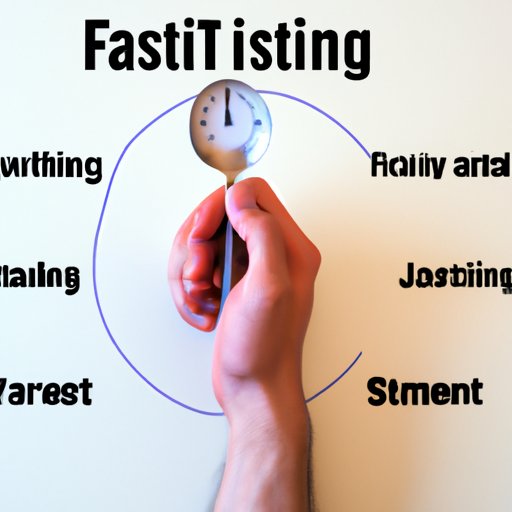
Introduction
Fasting has been practiced for centuries for religious and health reasons, but many people find themselves unsure about how long they should fast for, preventing them from achieving their desired health benefits. The purpose of this article is to provide guidance on the optimal duration of fasting that is based on individual needs and goals.
Benefits of Shorter Fasting Windows
Research has shown that shorter fasting windows can have significant health benefits. Shorter intermittent fasting periods can lead to weight loss, improved blood sugar and insulin levels, and a reduction in oxidative stress and inflammation. It can also boost cognitive function, digestive health, and promote longevity.
Intermittent fasting is one of the most popular forms of fasting, which involves eating within shorter time frames while fasting for the remaining hours of the day. The most common intermittent fasting periods are 14 hours and 16 hours of fasting respectively where the number of hours in which food is consumed range from 10 to 8 hours on a daily basis. Time-restricted eating is also popular, in which people eat their daily caloric intake within specific hours of the day.
Types of Fasting and Optimal Durations
There are different types of fasting, each with its own optimal duration:
Intermittent Fasting: The optimal duration for intermittent fasting is 12-16 hours per day. For women, a shorter period of fasting window might be necessary.
Water Fasting: Water fasting is non-caloric fasting that usually lasts between 24 to 72 hours. In some cases, a water fast may last up to five days.
Alternate-Day Fasting: This type of fast involves fasting every other day, and eating normally on non-fasting days. The optimal duration is 24 hours of fasting with typical eating in the off days.
Understanding Your Body’s Needs
It is important to listen to your body when it comes to fasting. Your individual needs, goals, and health status determine the optimal duration of fasting for your body. It is advisable to seek professional guidance if you have any pre-existing conditions or if you are pregnant or nursing. It may be important to adjust the duration and type of fasting in these cases.
Dangers of Prolonged Fasting
Prolonged fasting beyond the recommended time may lead to potential health risks and problems, including nutrient deficiencies or malnutrition, fainting, fatigue, and weakness. Excessive fasting can also compromise the immune system, leading to infection and inflammation.
Fasting and Exercise
Fasting periods can be combined with regular exercise to achieve optimal benefits for your body. The ideal duration for fasting before and after workouts is 2-3 hours to avoid energy depletion and dizziness.
Creating a Customized Fasting Routine
Creating a customized fasting routine can increase your chances of success and make it easier to stick to. When creating a fasting routine, consider your lifestyle, health goals, and preferences. Be flexible and willing to make adjustments as needed to ensure success over the long term.
Conclusion
Fasting can promote many health benefits, but there is no one optimal duration for everyone. It is essential to understand your body’s needs, preferences, and goals when deciding on a fasting duration. Prolonged fasting can be dangerous, and it is always advisable to seek professional guidance before starting a fasting routine.





